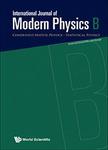版权所有:内蒙古大学图书馆 技术提供:维普资讯• 智图
内蒙古自治区呼和浩特市赛罕区大学西街235号 邮编: 010021

作者机构:Univ Sheffield Dept Mech Engn Sheffield S1 3JD S Yorkshire England
出 版 物:《INTERNATIONAL JOURNAL OF MODERN PHYSICS B》 (国际现代物理学杂志,B:凝聚态物理、统计物理、应用物理)
年 卷 期:2008年第22卷第29期
页 面:5111-5144页
核心收录:
主 题:DC servomotors electro-rheological robotic system controller model trend study position accuracy speed of response repeatability
摘 要:Industrial robot arms experience position inaccuracies due to the output cogging torques of the DC servomotors. Therefore, in an attempt to resolve these position problems, an electro-rheological (ER) robotic system is considered as an actuator to drive the robot arm rapidly in both directions. This ER robotic system consists of two ER clutches, an ER brake, a gear train, an encoder and a robot arm. The ER clutches produce clockwise and anti-clockwise rotations. The ER brake decelerates and halts the robot arm. The main aim of this paper is to validate a controller model of the ER robotic arm. Next, a trend study is used to determine the optimum working conditions of the ER actuated-robotic arm. The robotic displacements of both the ER rotary devices and the commercial DC servomotors are compared in terms of position accuracy and speed of response. Finally, the repeatability of the robotic end positions is examined in order to determine the importance of the ER brake.